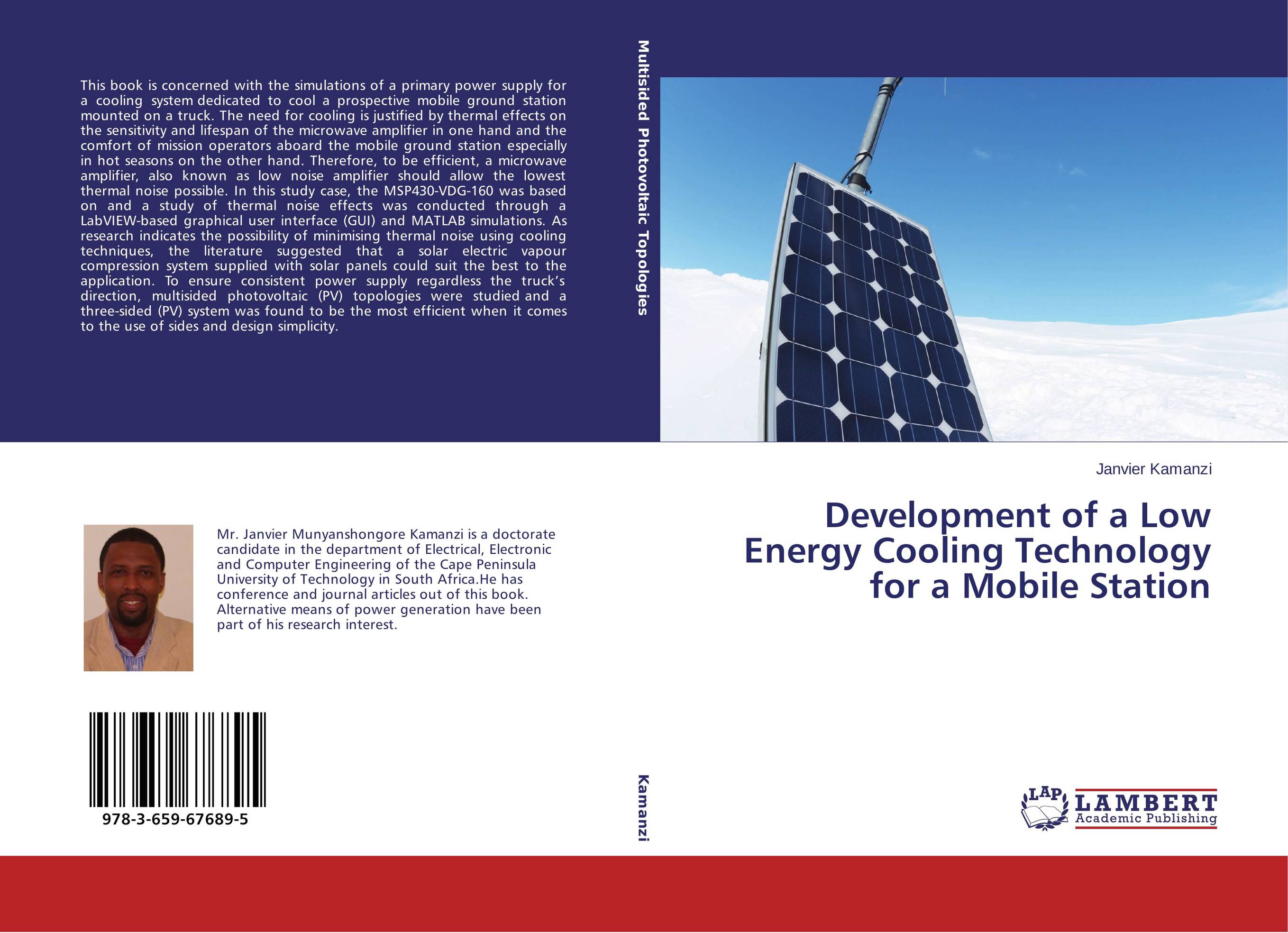| Поиск по каталогу |
|
(строгое соответствие)
|
- Профессиональная
- Научно-популярная
- Художественная
- Публицистика
- Детская
- Искусство
- Хобби, семья, дом
- Спорт
- Путеводители
- Блокноты, тетради, открытки
Development of a Low Energy Cooling Technology for a Mobile Station.

В наличии
| Местонахождение: Алматы | Состояние экземпляра: новый |

Бумажная
версия
версия
Автор: Janvier Kamanzi
ISBN: 9783659676895
Год издания: 2015
Формат книги: 60×90/16 (145×215 мм)
Количество страниц: 128
Издательство: LAP LAMBERT Academic Publishing
Цена: 32883 тг
Положить в корзину
| Способы доставки в город Алматы * комплектация (срок до отгрузки) не более 2 рабочих дней |
| Самовывоз из города Алматы (пункты самовывоза партнёра CDEK) |
| Курьерская доставка CDEK из города Москва |
| Доставка Почтой России из города Москва |
Аннотация: This book is concerned with the simulations of a primary power supply for a cooling system dedicated to cool a prospective mobile ground station mounted on a truck. The need for cooling is justified by thermal effects on the sensitivity and lifespan of the microwave amplifier in one hand and the comfort of mission operators aboard the mobile ground station especially in hot seasons on the other hand. Therefore, to be efficient, a microwave amplifier, also known as low noise amplifier should allow the lowest thermal noise possible. In this study case, the MSP430-VDG-160 was based on and a study of thermal noise effects was conducted through a LabVIEW-based graphical user interface (GUI) and MATLAB simulations. As research indicates the possibility of minimising thermal noise using cooling techniques, the literature suggested that a solar electric vapour compression system supplied with solar panels could suit the best to the application. To ensure consistent power supply regardless the truck’s direction, multisided photovoltaic (PV) topologies were studied and a three-sided (PV) system was found to be the most efficient when it comes to the use of sides and design simplicity.
Ключевые слова: ground station, thermal noise, cooling technologies, LabVIEW graphical user interface, MATLAB simulations, photovoltaic topologies, Renewable energy



